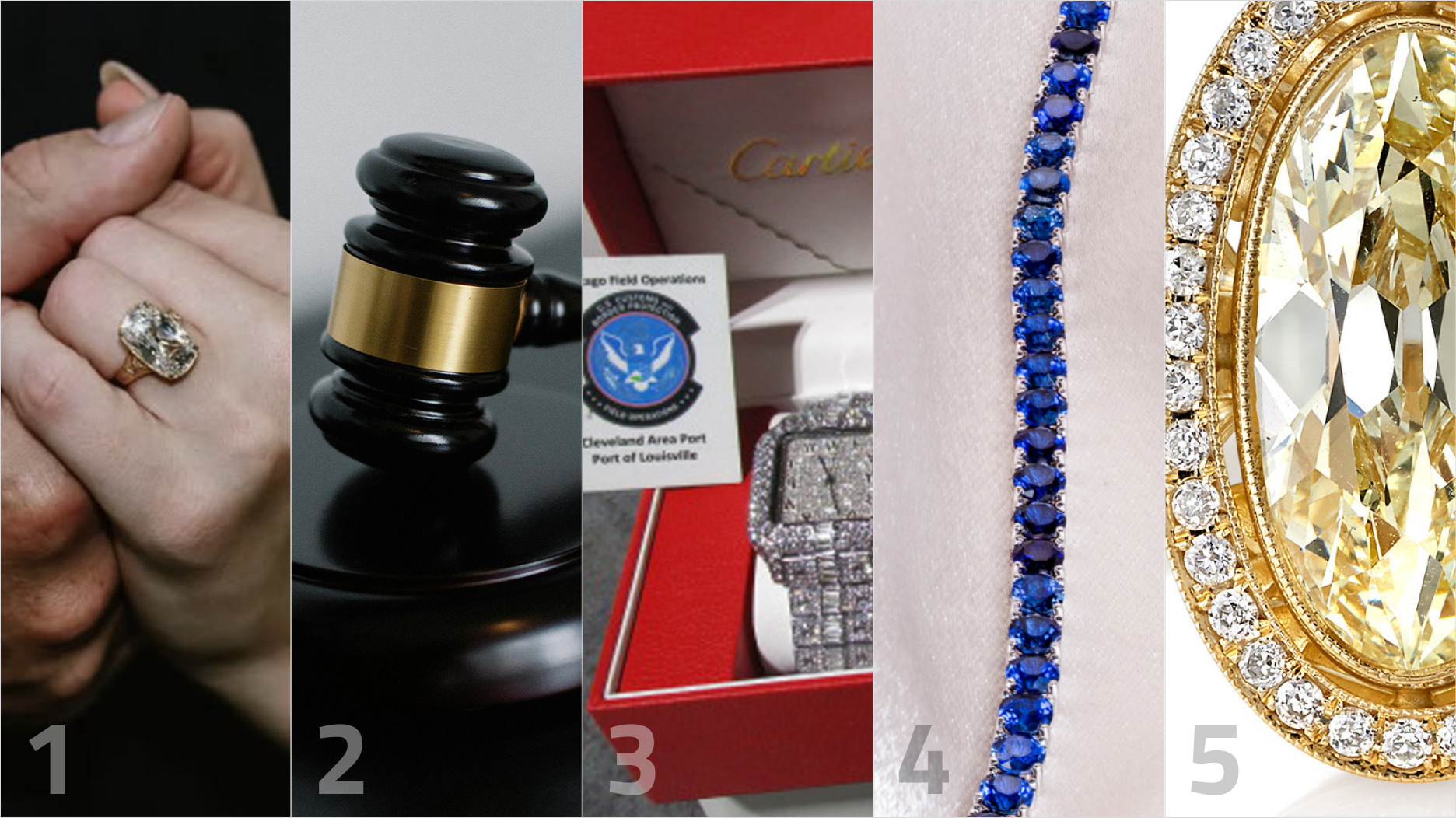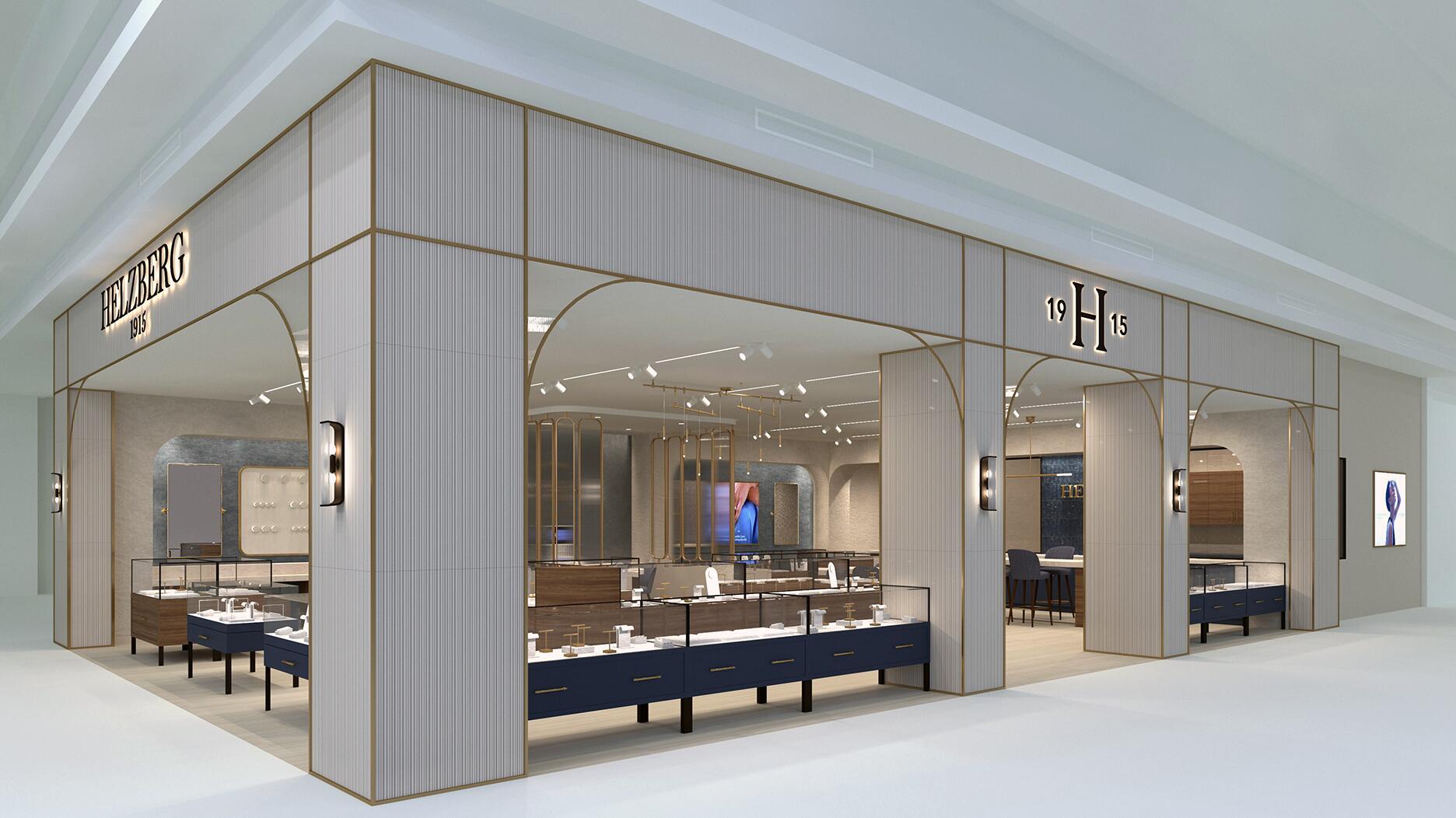Executive Chairman Richard Baker will take over the role as rumors swirl that a bankruptcy filing is imminent for the troubled retailer.
6 Trends and Observations from the 2020 Tucson Gem Shows
Gauging buying at the shows, the stones and shapes we heard about nonstop, and other considerations from the desert.

The sheer amount of material and members of the trade gathered together in one small city is incomparable, as is the desert in the middle of the wintertime.
This year, a decent holiday season seemed to roll into a great start to the year for many; the 2020 shows had plenty of activity and discussion.
Here are six things I noticed while walking the show floors and tents, attending education seminars and sessions, and talking with members of the industry.
1. The shows went well, and buying was strong.
Ahead of the shows, I seemed to hear a lot of variations on one phrase—“cautious optimism.”
It’s a phrase we hear a lot at National Jeweler from industry members when we’re trying to gauge the months, or even year, ahead.
And yet even with the positivity ahead of time, the 2020 Tucson shows seemed to do better than expected.
Almost everyone I talked to near the end of the week said this year had been good for them, with a few even noting it had been their best, or one of their best, years ever.

2. In faceted stones, the trends were pretty much what I expected.
The beauty of Tucson is that you can see just about any colored gemstone while you’re out there.
But as I was walking around AGTA and GJX toward the end of the week and talking to exhibitors about what was hot, there were a few stones I kept hearing about again and again: spinel, sapphires and garnets.
This falls in line with what a number of exhibitors predicted ahead of the shows.
In spinel, the story was all about the grays and icy shades. For sapphires, purples and pinks were hot, but the real star of the shows appeared to be Montana sapphires.
Purple and pink garnets were hot too, but the stone overall is really finding its footing and currently holds the title of “trade darling.”
There was also a lot of talk about hexagon cuts, kite shapes and other geometric cuts in stones that offer an updated, modern look to a gem.
3. Freeforms and freeform rose cuts were prevalent.
These unusual shapes didn’t make up a large portion of inventory at the booths, but I saw little selections here and there all over—freeforms, natural shapes, slices and the like.
They’re perfect for the jeweler who’s looking for something unique and different.
Quality cutting has always been desirable, for obvious reasons, when it comes to fine stones.
But the past few years have shown that more attention also is being paid to the faces behind the stones, especially for cutters creating one-of-a-kind designs.
There is an increasing number of cutters whose names we now know and whose work we sometimes even recognize, just as you would a jewelry designer.
More and more, they’re marketing themselves as such. I think the trend has a lot to do with social media; being able to have an Instagram presence, for example, to showcase their work.
On the afternoon of Saturday, Feb. 8, I went to the Somewhere in the Rainbow booth at AGTA to meet baby Jenova and take a picture of all the cutters involved in the baby mobile project called Grace, which I think is also a perfect showcase of this evolution in the market.
Nearly all 20 cutters showed up, and what struck me was not only how friendly and happy they all were to be there, but also how the project showcased their importance in the market today.
5. There is a lot of conversation around, and focus on, countries of origin and their development.
This shouldn’t be surprising, given the importance origin plays in the sales of colored stones in the market today.
Yet it felt like there was even more talk about important source regions this year.
Education sessions at AGTA GemFair, for example, included an update on sapphires from Madagascar, as well as a session from GIA on rubies from Mozambique.
I also learned some industry members were organizing a gem exhibition and conference this summer in Zambia, in the same vein as the Kenya Gem and Jewellery Fair. (I’m working on gathering all pertinent details and hope to have a more formal story on the launch soon.)
There also were numerous conversations throughout the week about expanding programs to travel to the source and discussing developments in source countries affecting the market.
I’m happy to see the emphasis in this area.
Ethical sourcing and sustainability are among the industry’s most important topics these days, and I don’t think that conversation can fully happen without members of the trade ensuring they understand how these markets are developing and how those playing a vital role abroad are faring.

6. The time is right for colored stones.
The past few years have paved the way for colored stones to continue to emerge as a solid option for jewelers. They offer margin, they offer something different, and they provide a story.
Combined with the strong buying activity and enthusiasm I saw for the sector in Tucson this year, I’d say there’s nothing but upside for colored gems.
I look forward to watching the market develop.
The Latest

Mohr had just retired in June after more than two decades as Couture’s retailer liaison.

Shekhar Shah of Real Gems Inc. will serve as president of the Indian Diamond & Colorstone Association in 2026.

How Jewelers of America’s 20 Under 40 are leading to ensure a brighter future for the jewelry industry.

This year’s good luck charm features the mythical horse Pegasus, and is our first Piece of the Week of the new year.


As part of the leadership transition, Sherry Smith will take on the role of vice president of coaching strategy and development.

It marks the third time the country has headed the Kimberley Process. Ghana will serve as vice chair.

Roseco’s 704-page catalog showcases new lab-grown diamonds, findings, tools & more—available in print or interactive digital editions.

The new Bulova x Stetson designs highlight two animals often associated with the American West—the bison and the Texas Longhorn.

Its residency at Yamron Jewelers will run through May 2026.

From influential executives to innovative designers, we pay tribute to the people we said goodbye to this year.

The retailer is expanding into areas with large Indian and South Asian populations.

The Italian brand has opened its first flagship amid the peaks of the Dolomites in Madonna di Campiglio, Italy.

The new curation at the Natural History Museum of Los Angeles County showcases rare gem and mineral specimens in their uncut, natural state.

The couple pleaded guilty to concealing at least $127 million in cash transactions at its precious metals businesses.

Consumers shared concerns about prices, inflation, tariffs, trade, and politics in the survey’s write-in response section.

In February 2026, the auction house will move its headquarters to the former Steinway Hall, a neoclassical landmark on Billionaires’ Row.

The new show will take place Jan. 23-25, 2026.

The former BHP Billiton leader and Gemfields chairman is remembered for his influential leadership throughout his 50-year mining career.

The LVMH-owned brand has partnered with the costume design union to revamp its award for 2026.

The luxury titan inked a deal to acquire an initial minority stake in the jewelry manufacturer with a pathway to full ownership by 2032.

The company’s curation of unsigned vintage and estate jewelry debuted at the Bloomingdale’s in Costa Mesa, California.

In the recent multi-shipment seizure, CBP also found counterfeit Audemars Piguet, Moncler, and Chrome Hearts items.

Jewelers of America execs and National Jeweler editors discuss tariffs, the sky-high gold price, and the engagement that broke the internet.

The luxury goods company said founder Ippolita Rostagno will remain at the brand’s helm.

Laura Burdese, who joined the Italian luxury brand in 2022, will take on the role in July.

The National Jeweler editors revisit the most noteworthy industry happenings and design trends from 2025.


























